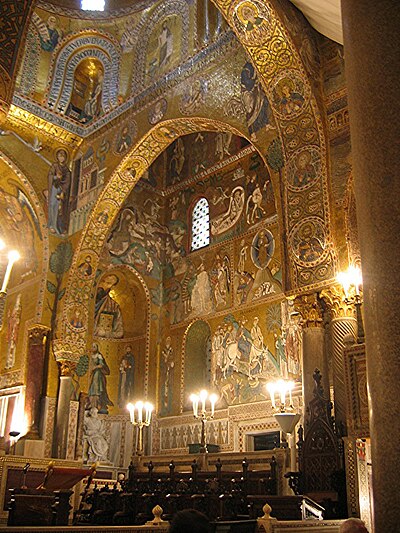Palazzo dei Normanni
The palace stands in the highest point of the ancient centre of the city, just above the first Punic settlements, whose remains can still be found in the basement.
The palace returned to an important administrative role in the second half of the sixteenth century, when the Spanish viceroys chose it as their official residence, carrying out important reconstructions, aimed at their representative needs and their military ones, with the creation of a system of bastions.
The west wing (with the Porta Nuova) was assigned to the Italian Army and is the seat of the Southern Military Region.
[citation needed] During the sixties, it received comprehensive restorations under the direction of Rosario La Duca.
The wonderful mosaics, the wooden roof, elaborately fretted and painted, and the marble incrustation of the lower part of the walls and the floor are very fine.



